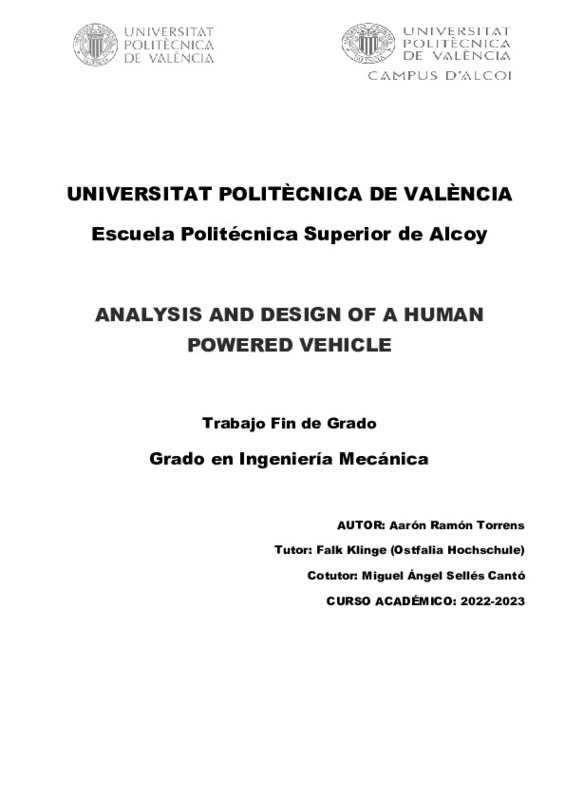JavaScript is disabled for your browser. Some features of this site may not work without it.
Buscar en RiuNet
Listar
Mi cuenta
Estadísticas
Ayuda RiuNet
Admin. UPV
Analysis and design of a Human Powered Vehicle
Mostrar el registro completo del ítem
Ramón Torrens, A. (2023). Analysis and design of a Human Powered Vehicle. Universitat Politècnica de València. http://hdl.handle.net/10251/201921
Por favor, use este identificador para citar o enlazar este ítem: http://hdl.handle.net/10251/201921
Ficheros en el ítem
Metadatos del ítem
| Título: | Analysis and design of a Human Powered Vehicle | |||
| Otro titulo: |
|
|||
| Autor: | Ramón Torrens, Aarón | |||
| Director(es): | Klinge, Falk | |||
| Entidad UPV: |
|
|||
| Fecha acto/lectura: |
|
|||
| Resumen: |
[ES] Desde principios del siglo XIX, en la industria del automóvil se han buscado estructuras más ligeras y diseños aerodinámicos mejorados para dar con un vehículo aerodinámicamente eficiente con un consumo energético y ...[+]
[EN] Since the beginning of the 19th century, lighter structures and improved aerodynamic designs have been pursued in the automotive industry to stumble upon an aerodynamically efficient vehicle with optimal energy ...[+]
|
|||
| Palabras clave: |
|
|||
| Derechos de uso: | Reserva de todos los derechos | |||
| Editorial: |
|
|||
| Titulación: |
|
|||
| Tipo: |
|
recommendations
Este ítem aparece en la(s) siguiente(s) colección(ones)
-
EPSA - Trabajos académicos [5876]
Escuela Politécnica Superior de Alcoy







